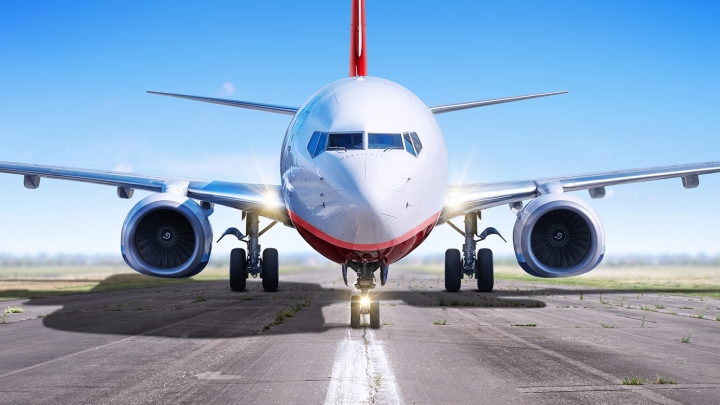What Does a Flight Attendant Do? (And How To Become One)
Updated April 1, 2024

What does a flight attendant do?
Flight attendants work for private and commercial airline companies to keep passengers safe and comfortable. They help passengers get seated, demonstrate how to use the plane's safety equipment, including seat belts, and provide snacks, beverages and other services. Legally, all airlines require flight attendants on staff to ensure passengers' safety. Additional flight attendant responsibilities include:- Attending preflight briefings with the pilots to get flight information for each trip
- Inspecting emergency equipment before each flight
- Ensuring the plane's cabin is clean and well-stocked with food and drinks
- Lifting heavy luggage into overhead bins and closing them before takeoff
- Making sure all passengers are prepared for takeoff and landing
- Helping passengers with special needs, small children or medical assistance needs
- Responding to disruptive passengers and monitoring the plane for suspicious behavior
- Helping passengers find their seats, locating and use safety equipment, putting out potential fires and directing evacuations in case of emergency situations
- Reporting safety or medical issues that occurred on a flight
- Reviewing company policies and health guidelines for passengers
Salary and job outlook for flight attendants
The national average salary for a flight attendant is $39,321 per year. Your earnings can vary based on your experience, education, employer and location. For the most up-to-date salary information from Indeed, click on the link provided.The United States Bureau of Labor Statistics (BLS) projects flight attendant jobs to grow by 21% between 2021 and 2031. This increase is much faster than the average occupation. Due to this, there might be 18,100 job openings annually.Related: Pros and Cons of Being an Airline Flight AttendantFlight attendant requirements
To get hired as a flight attendant, you're required to be at least 18 or 21 years old, depending on the state or employer, have a current passport, have at least 20/40 vision and pass a drug test and background check. Additional requirements may include passing a medical examination and meeting an airline's height requirements.Here are some other requirements to become a flight attendant:Education
Flight attendants have at least a high school diploma or GED. Some airlines may prefer a candidate with an associate or a bachelor's degree in subjects like:- Hospitality
- Public relations
- Tourism
- Communication
- Business
- Nursing
Training
Many flight attendants require a year or two of work experience to gain customer service skills. Once hired, they participate in three to six weeks, and sometimes up to six months, of training provided by the airline. During this training period, flight attendants learn safety and emergency procedures, first aid, flight regulations and job duties. They also take practice flights to apply their new skills and knowledge.All flight attendants complete this initial training to get certified by the Federal Aviation Administration (FAA). This role may complete additional job training, depending on the airline employer.Related: How To Write a Flight Attendant Resume With No ExperienceCertifications
Flight attendants require certification with one of the following credentials:FAA Certificate of Demonstrated Proficiency
This certificate, which flight attendants earn by completing their on-job training and passing an exam, is mandatory. Flight attendants train for and become certified for each type of aircraft they work on. They also continue receiving training each year to stay certified.Flight Attendant Certificate Courses
Organizations such as Inflight Institute offer certification programs by type of airline: charter, regional, national or international. Their partner airlines require flight attendants to take flight attendant certificate courses, which cover topics ranging from aviation terminology to safety procedures to passenger handling, before being hired.Read more: What Is a Flight Attendant Certificate? (With Tips and Benefits)Skills
Generally, flight attendants enjoy working with people and have strong interpersonal and customer service skills. For many flight attendants, the ability to travel to different locations makes it worth the varied hours, so consider if this is a good lifestyle fit for you due to the long and unusual hours.Some soft skills aspiring flight attendants can develop include:- Attention to detail: Flight attendants monitor passengers for issues or suspicious activities. They're meticulous when doing safety checks on equipment and for people.
- Communication: Individuals in this role can communicate clearly and confidently when giving safety demonstrations and interacting with passengers and crew. They're also courteous and have strong listening skills.
- Customer service: Part of a flight attendant's job is providing hospitality, which can include answering questions, directing passengers to their seats and assisting with storing luggage in the overhead bins. They're friendly and patient when providing services to ensure passengers have a positive flight.
- Stamina: Flight attendants often work long hours, respond to challenging passengers and handle heavy items, such as luggage and service carts.
- Efficiency: Flight attendants work quickly and efficiently to complete preflight tasks for an on-time departure.
- Leadership: In emergencies, flight attendants take charge and make quick decisions to guide passengers to safety.
How to become a flight attendant
Here's an overview of how to become a flight attendant in ten steps:- Get a high school diploma. The minimum education requirement for flight attendants is a high school diploma or GED.
- Talk to a career counselor. Speak with a counselor about your intention to become a flight attendant. Your career counselor can help you select the most beneficial coursework to prepare you for this role.
- Earn a college degree. While most airlines hire flight attendants without degrees, an associate or bachelor's degree in public relations may improve your job opportunities.
- Build customer service skills. Consider working for a year or two in a hospitality or service job to develop your customer service skills. You might work at a restaurant, hotel or any role that requires interacting with others.
- Practice your interview skills. Show you're knowledgeable of flight attendant duties and skills and you possess customer service skills. Prepare a resume in advance to prove your education and customer service experience.
- Apply for jobs. You can apply for flight attendant positions if you're over 18 years old and have good health and vision.
- Train. If an airline hires you, you can train for weeks or months to prepare for FAA certification. Training courses include performing first aid, responding to challenging flight or passenger situations, evacuating, putting out fires and learning survival skills and self-defense.
- Get certified. After you have completed initial training, pass the FAA's exam to become certified and legally allowed to work as a flight attendant.
- Complete reserve status. New flight attendants start on reserve status. During this time, you're on call to fill in for other flight attendants or extra flights, typically lasting one year.
- Advance in your career. After you gain enough experience, you may have the seniority to choose your base, routes and schedule. You might also mentor, recruit, train or manage other flight attendants and help with tasks such as scheduling.
Work environment for flight attendants
Flight attendants can work part-time or full-time for commercial, corporate, regional or international airlines. They work unconventional and lengthy hours and schedules, including being on-call or coming to work with last-minute notice, because airlines operate day and night, year-round, on holidays and weekends. Most airlines ensure flight attendants work no more than 12 hours a day, but international flights may require them to work longer. The FAA requires flight attendants to have at least nine hours off between shifts.They often spend nights in hotels between flights and might be away from home for several days. Flight attendants spend part of their workdays in the air and part on the ground preparing or waiting for the next flight. When flying, they work in the plane's cabin with crew members. A flight attendant's job can be challenging at times, as they respond to potential emergencies, experience air turbulence and remain on their feet for long periods.Related: 18 Jobs in the Aviation IndustryGet recommendations for your resume in minutes
Flight attendant job description example
Here's an example of a job description for a flight attendant:Hero Airlines is seeking an experienced flight attendant to join our enthusiastic flight crew. The flight attendant's general duties involve routine safety checks and passenger assistance as they ensure every client has a comfortable and first-rate flying experience. We're looking for an individual with exceptional customer service, a love of travel and the ability to maintain a flexible schedule and work on short notice. The ideal candidate also has excellent communication skills and makes effective decisions in a fast-paced environment.Candidates have at least three years of experience and receive on-job training upon being hired.Related: What Does a Parking Attendant Do? (With Salary and Skills)
Flight attendants
Explore more articles
- How To Get a Higher Paying Job
- 40 Interview Questions About Quality Control
- Top 10 Flight Nurse Salaries By State (And How To Become One)
- How To Become a Brand Ambassador in 7 Steps
- What Does a Payroll Specialist Do? (And How Much They Earn)
- How To Start Your Own Dog Day Care
- 15 Jobs for Advertising Majors (With Salaries and Duties)
- 15 Accredited Certificates To Advance Your Career
- How To Become a Veterinary Pharmacist in 5 Steps (Plus Tips)
- Career Paths You Can Take With a Geology Degree
- A Look at the Best Places To Find a Job
- 19 Jobs You Can Do With an IT Degree


